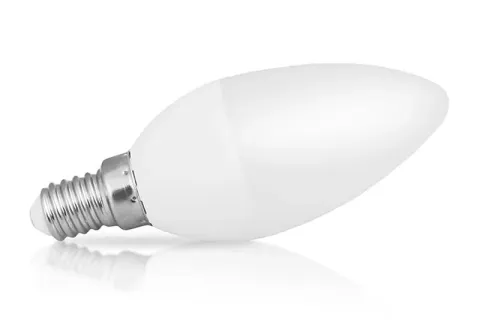Night lights usually need to be turned on for a long time, and the long life characteristics of LED lamps make them very suitable for this purpose. The life of LED night lights can usually reach more than 25,000 hours, compared with the much shorter life of traditional bulbs.
If the heat dissipation design of LED lamps is poor, the high temperature of LED chips will accelerate their aging. High temperature will cause electron migration inside the chip, which will reduce its luminous efficiency and eventually lead to brightness decay.
When choosing LED lighting fixtures, consumers should focus on lumens rather than watts. Lumens more directly reflect the brightness of the lamp, while watts are mainly used to reflect the energy consumption of the lamp. Understanding the difference between the two can help consumers make more appropriate purchasing decisions.
According to the principles of physics, the greater the current, the more times the electrons and holes in the LED recombine, and the more light energy is generated, so the LED will appear brighter. For standard LED bulbs or LED panel lights, the relationship between brightness and current is usually linear - that is, the current increases, the brightness increases.
For example, if you need to provide uniform lighting for a 20 square meter area and the target illumination is 300 lumens/square meter, the total lumens required is: Total lumens = target illumination × space area = 300 × 20 = 6000 lumens Then, calculate the required wattage based on the luminous efficacy of the selected LED lamp. For example, assuming that the selected luminous efficacy is 150lm/W, the required wattage is: Required wattage = 6000/150 = 40W
Color temperature is a physical quantity that describes the color of a light source, usually in Kelvin (K). The color temperature represents the degree of warmth or coolness of the color tone of the light source. Color temperature is defined by simulating blackbody radiation.
Pros of LED recessed downlights: 1. Energy-saving and high efficiency 2. Modern and simple appearance design 3. Uniform light effect and reduced glare 4. Flexible installation methods 5. Adapt to a variety of scenarios and needs Cons of LED recessed downlights: 1. High installation requirements 2. Inconvenient maintenance 3. Restrictions on light adjustment 4. High cost
Standard ceiling (2.4-2.7 meters): This is a common height in most homes and offices. At this height, the distance between two LED lamps is generally recommended to be between 1/3 and 1/2 of the width of the room.
Assuming that the wattage of each LED downlight is 10 watts, the number of lamps required is: For a demand of 66.7 watts, the number of lamps required is approximately: 66.7W divided by 10W = 6.7. That is, about 7 10-watt LED downlights are required. For a demand of 111.1 watts, the number of lamps required is approximately: 111.1W divided by 10W = 11.1. That is, about 11 10-watt LED downlights are required.
1. Advantages of LED recessed downlights (1) Energy-saving and high efficiency (2) Long life (3) Simple and beautiful appearance (4) Uniform lighting effect (5) Strong adaptability and flexible installation (6) Low heat and environmental protection 2. Disadvantages of LED recessed downlights (1) Holes need to be reserved for installation (2) Heat dissipation problems (3) Difficult to repair (4) High initial cost (5) Concentrated light source and lack of flexibility
Traditionally, LED lamps are usually controlled by manual switches. The existence of a switch allows users to easily turn on or off the lamp when needed, ensuring the convenience and energy saving of lighting. In this case, the switch is usually installed near the entrance, such as the kitchen door or next to the cabinet, so that users can easily operate it manually.
Advantages of surface mount LED lights: 1. High efficiency and energy saving 2. Long life and low maintenance cost 3. Compact design and flexible installation 4. Green and environmentally friendly with no harmful substances 5. Instant light on and no flicker Disadvantages of surface mount LED lights: 1. Higher price 2. Overheating problem 3. Limited light distribution 4. Not applicable to all locations












